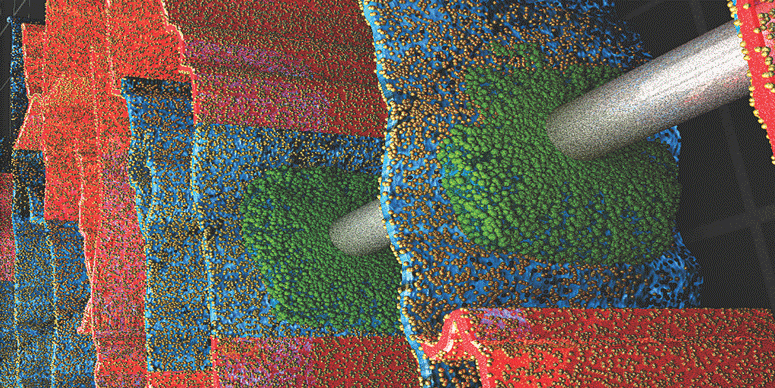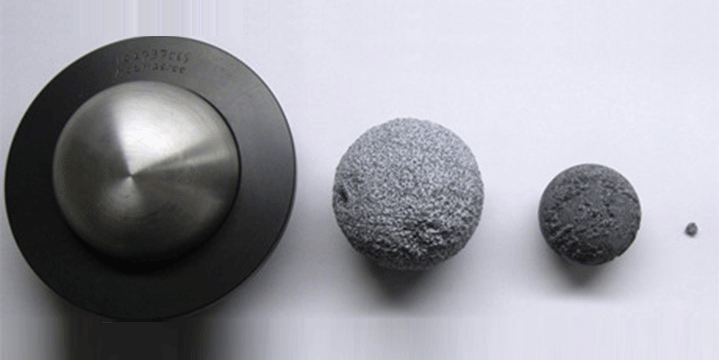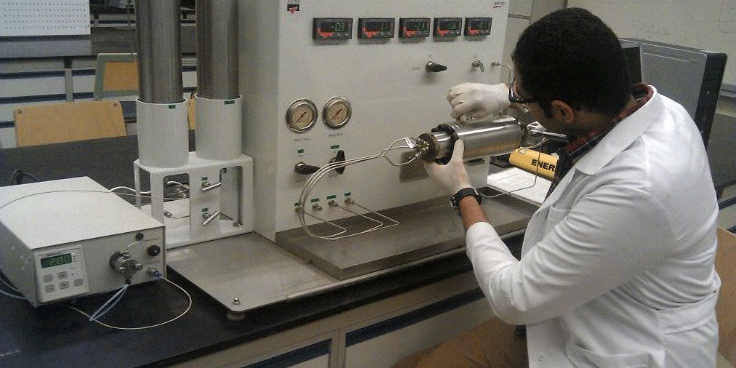Few years ago, applications of nanotechnology in Oil and Gas Industry were considered mysterious and the common thought was that it would take very long years to find some of these applications in the real oil field.
Today, there are many innovative products applying nanotechnology under way in the E&P sector and playing a vital role in oil field operations.
So what are the basics of nanotechnology applications?
Nanotechnology encompasses Nano-scale science, engineering, and technology, and involves imaging, measuring, modeling, and manipulating matter at nano scale (National Nanotechnology Initiative NNI, 2010). Due to their nanometer length scale, Nano-materials often demonstrate unique and unpredicted properties.
Baker Hughes is one of the leading suppliers of oilfield services, products and technology to the worldwide oil and gas industry; Moreover, it is at the forefront of nanotechnology-oriented products suppliers in the oil field. In this article, I will be listing some of the latest unique products with focus on some of Baker Hughes commercially available products and their impact on the field operations.
Multistage Hydraulic Fracturing
Baker Hughes IN-Tallic™ disintegrating frac balls stood out as an example of how nanotechnology can do things that otherwise would not be possible.
Baker Hughes IN-Tallic™ are composed of Controlled Electrolytic Metallic (CEM™) nanostructured material that is lighter than aluminum and stronger than some mild steels, but disintegrates when it is exposed to the appropriate fluid. The disintegration process works through electrochemical reactions that are controlled by nanoscale coatings within the composite grain structure. The nanomatrix of the material is high strength and has unique chemical properties that conventional materials do not.
The IN-Tallic™ balls maintain shape and strength during the fracturing process and then disintegrate before or shortly after the well is put on production. The frac balls disintegrate over time by exposure to brine fluids, so the disintegration occurs with most fracturing and wellbore fluids and no special fluid mixture is required.
The Baker Hughes FracPoint™ multistage fracturing system using the IN-Tallic™ frac balls, provides quick and continuous hydraulic fracturing using ball-activated frac sleeves. After the system has been installed, stages are isolated using openhole packers or cement. The sleeves are then activated, using various-sized frac balls dropped from the surface as the fracturing treatment is pumped, providing nonstop fracturing operations. After fracturing is complete, production can begin immediately, and the IN-Tallic™ frac balls disintegrate in the well to ensure a clear flow path without through-tubing intervention. This fracturing system—which eliminates rig up and rig down between stages— reduces overall pumping time while maximizing reservoir contact to increase drainage.
The Baker Hughes SHADOW™ series frac plug is a permanent millable plug designed to be left downhole during production, completely eliminating the plug drillout phase of plug-and-perf completions. The plug features a large flow-through inside diameter (ID) and uses IN-Tallic™ disintegrating frac balls so production can flow with the plugs in place, saving time, and eliminating the cost and risk associated with coiled tubing (CT) intervention.
In 2013, Schlumberger patented ELEMENTAL degradable technology to be used with multistage stimulation system frac balls. This aluminum-based material degrades completely within hours or days, depending on ball size, temperature, and other downhole conditions, eliminating the risk of stuck frac balls and the need to mill them.
Baker Hughes is also working on developing its service of ‘Hydraulic Fracturing’. Viscoelastic surfactant (VES) fluids have been widely used as stimulation fluids, including gravel-packing fluids, fracture packing fluids, and fracturing fluids. But they may easily produce low viscosities and high fluid leak off from the fracture at high temperature, which limit their applications to hydraulic fracturing and fracture-packing treatments. The experimental results demonstrated that nanoparticles added to a VES solution could maintain viscosity at high temperature and control the fluid loss of VES stimulation fluid.
Moreover, Baker Hughes has commercial fines-fixing agents use the high surface force of a special solid material manufactured to nanometer particle size to capture or fixate formation fines. The nano-sized material is added to hydraulic-fracture proppant packs or gravel packs on the fly to stabilize formation fines. The nanoparticles, due to their extremely high aggregate surface area, can be made to act as “nano-sponges”, work by catching and retaining fine formation particles at the point of contact with the gravel or proppant. This action prevents fines from migrating into or through the gravel or proppant pack where plugging could occur near the wellbore or at the sand-control screen.
Enhanced Oil Recovery
Nanoparticles in an aqueous dispersion (nanofluid) has been applied as an EOR method. Nanofluids have successfully been developed in laboratories, and the upcoming challenge is to develop techniques for cost-efficient industrial-scale production of nanofluids.
“The Chinese were the first to use these particles in field studies,” says Arne Skauge, Director of CIPR. The studies showed that they work, but there were still many unanswered questions about how and why. They began to categorize the particles’ size, variation in size, and structure.
Also, the nanomaterials make great tools for the development of underground sensors, and the formation of imaging-contrast agents due to their substantial alternation in optical, magnetic, and electrical properties. Nanomaterials combined with smart fluids can be used as extremely sensitive sensors for pressure, temperature, and stress downhole under harsh conditions.
In 2006, Saudi Aramco – EXPEC ARC introduced the concept of Reservoir Robots and kick-started the industry’s first initiative aimed at testing the potential for in-situ reservoir surveillance, or “illumination.”
This illustration depicts the injection of nanoparticles into reservoir rock and the recovery of the particles
In 2008, EXPEC ARC has successfully researched several important aspects of these Resbots necessary for their successful journey into the underground, including size, concentration, chemistry, interactions with the rock surfaces, pore-scale movement and speed of transport in the reservoir.
In 2010, 5 kg of A-Dots (Resbots) were mixed in 255 bbl. of seawater and injected into an observation well in the Ghawar field. Pumping continued until the A-Dots had moved about 20 ft. into the reservoir, and the well was shut in. Three days later, the well was allowed to flow and samples were collected over a 2-day period. Laboratory analysis showed nearly 90% of them were recovered.
The current research step is the long-distance test. The A-Dots will enter a reservoir though a water-injection well to see if they are able to flow in large numbers to nearby production wells. If the A-Dots perform as expected, it would be a significant step toward the development of future generations of Resbots.
In conclusion, Nanotechnology has been providing endless potential solutions to the biggest challenges in the Oil and Gas industry. Nowadays, many major international companies are competing against time to best utilize nanotechnology concepts through different petroleum disciplines from Exploration, to Reservoir, Drilling, Completion, Production and Processing & Refinery so that they can confront the rapidly increasing domestic demand for oil all over the world.
The number of published nanomaterials research studies may be rising exponentially, while the number of products using them is small in comparison. But, this should not make anyone into thinking that great potential does not exist.
While dropping energy prices—for both oil and natural gas—has investors and analysts checking to see what the break-even price is for oil production in each play, further development is necessary for practical and economic implementation of these emerging applications in the field, the “nano” world clearly brings to the E&P industry exciting new opportunities and challenges.

 石油圈
石油圈



